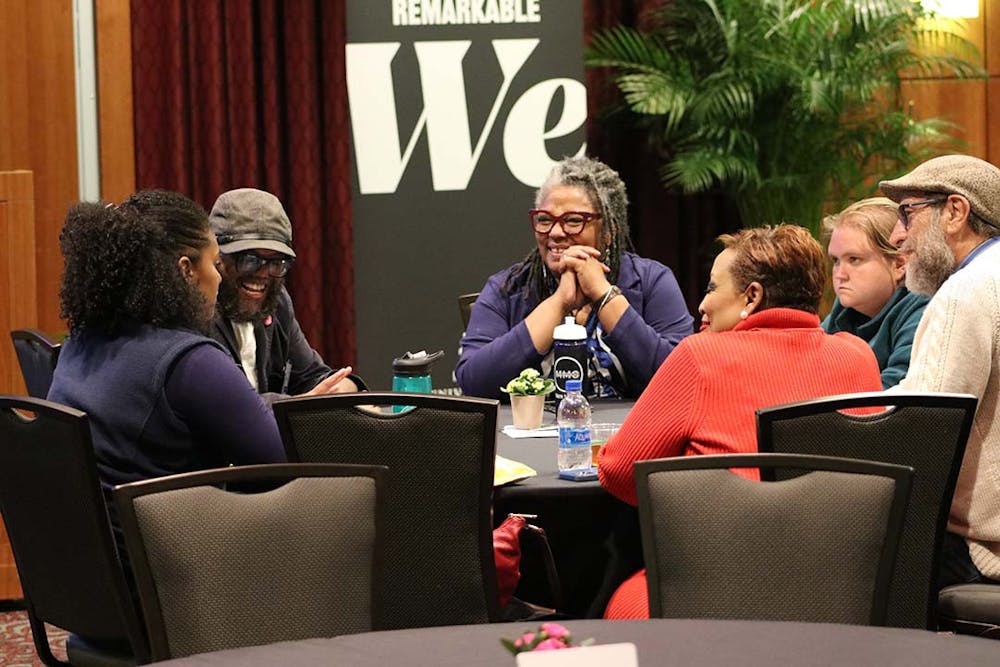USC researchers and partners have recently engaged in multiple projects to learn the effects of Columbians' surroundings on their overall well-being. These efforts include bus tours around Columbia and environmental research.
The university’s fifth annual Equity and Inclusion Summit, which went from Nov. 9 to Nov. 11, addresses that work. Part of this year’s summit, themed “Designing for Spatial Dignity,” is a bus tour around Columbia’s twelve zip codes, followed by a conversation about the differences between the communities and their residents' quality of life.
Ericka Wooten, the director of diversity, equity, inclusion and belonging at the Sisters of Charity Foundation of South Carolina, which works to reduce poverty in South Carolina through research and advocating for policies, and one of the leaders of the tour, said people in Columbia’s different zip codes experience "stark" differences in quality of life.
Facilities such as banks, doctor’s offices, and even grocery stores are few and far between in some parts of the city. The bus tour could provide a deeper understanding and awareness of inequality in Columbia, Wooten said.
“We tend to live in our own little bubbles, and sometimes we don't have the opportunity of going outside of those bubbles very often," Wooten said. "And this bus tour is an opportunity to do just that."
Midlands Mediation Center executive director Kabrina Bass, the tour’s other leader, said the distance between the facilities mentioned above and the communities that use them can lead to increased costs for people in Columbia without cars.
“If I don't have a car, that means I got to pay to get on a bus or get an Uber to go to the grocery store," Bass said. "And then I have to pay to get back home.”
In addition to addressing inequalities, Bass and the Midlands Mediation Center help to discuss potential solutions.
“Mediation is about building community resilience and sustainability by empowering communities to work through their own issues and create their own solutions,” Bass said.
Bass explained the inequalities facing Columbia communities as an apple tree leaning to the side. The people on the side of the tree that leans down have more access to apples, since the tree is lower. Giving a ladder of equal length to both sides will not solve the problem.
“That still gives the person that the tree leans toward more access to the fruit, while the other person’s still got to struggle to try to get the fruit,” Bass said.
For solutions that last, the tree must be fixed by addressing root causes of inequality, Bass said. USC has ongoing research focused on amending such factors.
Geography professor Kirstin Dow’s work focuses on the level of tree canopy cover in the city of Columbia. Columbia is about 20% less shaded by trees than it was in 2005, Dow said. That is partially due to the expansion of Columbia into less wooded areas and the aging of Columbia’s trees.
“In parts of the city that are hot, people are paying more expensive heating or more expensive cooling costs. So if parts of the city are warmer, people in those areas will be paying more," Dow said. "In the state of South Carolina, we have a situation where people who are living at below the poverty line can spend up to 30% of your income on cooling and heating costs.”
There are also historical links between increased canopy coverage and increased property values in Columbia. Nationally, redlining, or the practice of denying homeowners a mortgage based on race or desired neighborhood is linked with lower tree coverage, according to Dow. There's currently not enough information to know if this is also true for Columbia.
The results of heat map work Dow and others are doing will be publicized this week and show where in Columbia planting more trees would have the greatest impact.
“We have people who have historically been underserved by institutions and who have limited means to change the circumstances themselves,” Dow said.
Bass hopes the discussion emerging from the Nov. 10 bus tour will focus on exactly how communities can change their own circumstances. Civic participation, even beyond voting, is key, Bass said.

